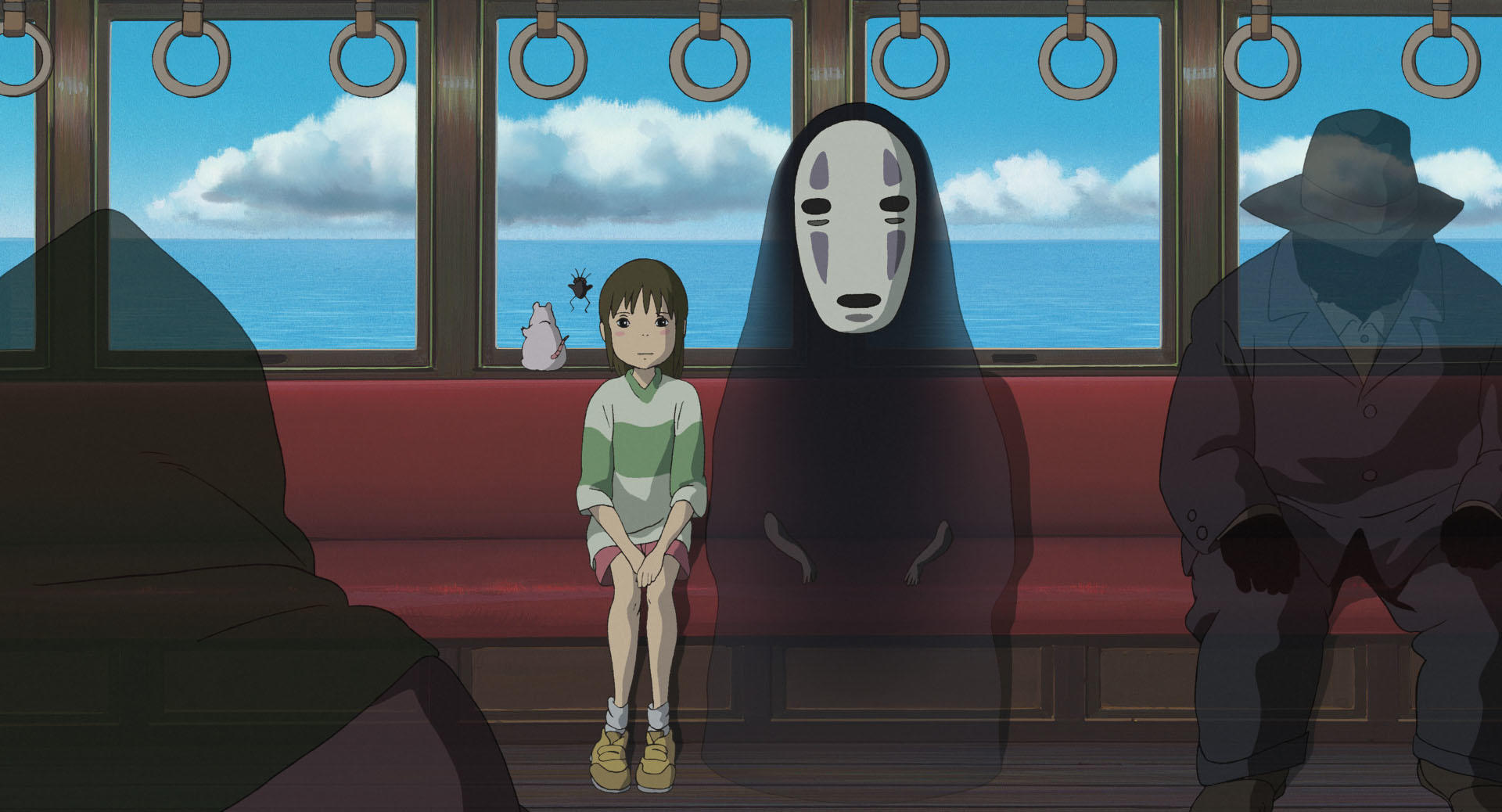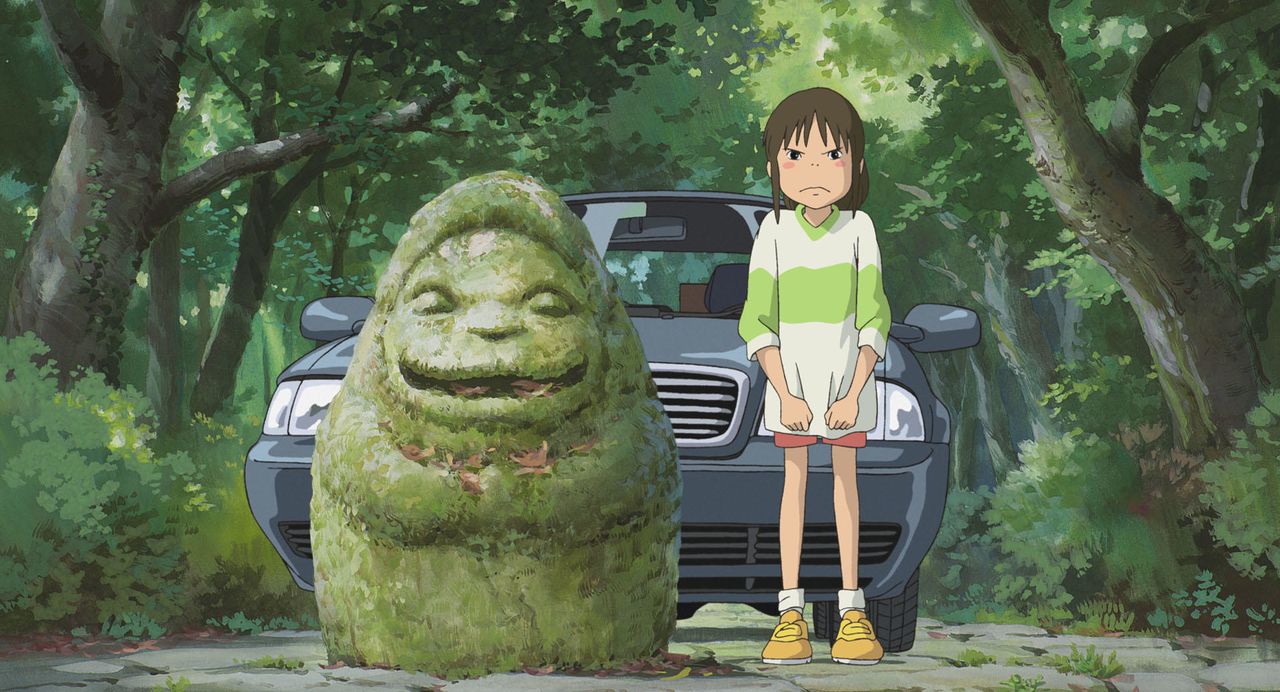Released in 2001, Studio Ghibli’s Spirited Away became a phenomenal success in Japan and resonated deeply with audiences around the world. In 2003, it was honored with the Academy Award for Best Animated Feature.
But what the film truly portrays is not just visible fantasy. What captivated international viewers may have been something deeper—the subtle, intuitive sensibility dwelling within the Japanese heart. In other words, it may have been the very soul of Japan that spoke through the story.
Familiar and Strange — The Structure of the “Otherworld”
Spirited Away tells the story of a young girl, Chihiro, who wanders into a mysterious world centered around a magical bathhouse. Frogs talk, gods soak in hot water, and names are taken away. To international audiences accustomed to Western storytelling, this world may seem bizarre and fantastical—yet many have remarked on a strange sense of déjà vu.
One reason for this is the film’s deep grounding in traditional Japanese cosmology: folk beliefs, yōkai (spirits and creatures), and the idea of Yaoyorozu no Kami—the eight million gods dwelling in nature. Rather than being explained logically, the world unfolds through feeling and intuition. This structure resonates with audiences across cultures, evoking memories of their own spiritual roots.
As one Taiwanese film critic noted, “Spirited Away is a treasure trove of East Asian memory.” It feels nostalgic, yet entirely new—and in that tension lies the film’s power to speak to the world.
Names and Existence — A Question of Identity
In Spirited Away, the protagonist Chihiro loses her name upon entering the bathhouse and is forced to work under the name “Sen,” given to her by the sorceress Yubaba. This idea draws from traditional Japanese folklore—kamikakushi (being spirited away) and the belief that knowing someone’s name grants power over them.
This theme—your name equals your self—has been widely interpreted as a reflection of identity loss in modern society and the way individuals are reduced to symbols in a consumer-driven world.
In the United States, educators have praised the film as a valuable resource for encouraging children to think about “how to stay true to themselves.” It is often used in literature and philosophy classes. In this way, Chihiro’s journey to reclaim her name becomes a universal metaphor—a journey of self-discovery that resonates with audiences everywhere.

Between the Everyday and the Extraordinary — A Story of Hare and Ke
The world Chihiro enters in Spirited Away feels like it lies just behind the fabric of ordinary life—yet it is strangely grounded. The boiler room where Kamaji works, Yubaba’s account books, Chihiro scrubbing floors—these scenes give the fantastical setting a palpable sense of labor and lived reality.
This is what keeps the story from becoming mere fantasy—it remains tethered to something familiar. In Japanese culture, there is a deep-rooted awareness of ke (the everyday) and hare (the special, sacred). Visiting a shrine or taking part in a festival may seem extraordinary, but they are still extensions of daily life.
Spirited Away lives in that in-between space—the awareness of transitions between hare and ke. International audiences sense something real in this otherworld precisely because the spirit realm is depicted not as an abstract fantasy, but as something grounded in everyday life. This subtle, lived-in approach resonates across cultures.
Pollution and Purification — Layers of Environment and Spirit
In Spirited Away, polluted beings such as the “Stink Spirit” and the river god appear—only to be cleansed in the bathhouse. This is more than just a metaphor for environmental concerns; it reflects a deep cultural ethos in Japan, where purity and the act of cleansing hold spiritual significance.
Respect for nature, rituals of purification, and quiet prayers are not framed in terms of good versus evil—as often seen in Western narratives—but rather as part of an aesthetic of ambiguity. This concept has drawn interest from philosophers and scholars of religion around the world.
A German cultural journal observed, “This film doesn’t portray ‘goodness’—it portrays harmony.” And indeed, harmony is a central expression of the Japanese spirit—where balance, respect, and renewal form the foundation of life and storytelling.
Conclusion — A Landscape of the Soul That Moves the World
At first glance, Spirited Away appears to be a coming-of-age story about a young girl. Yet beneath the surface lies a rich tapestry of values deeply cherished in Japanese culture: the significance of names, harmony with nature, reverence for the unseen, and the quiet strength of embracing ambiguity.
This is why audiences around the world often say, “I don’t fully understand it, but I was deeply moved.” What they are feeling may not be confusion, but rather a brush with the spirit of Japan itself.
Like Chihiro, the world may be rediscovering something precious—something long forgotten yet essential—through this film. And in doing so, we are reminded that the soul’s landscape transcends language, crossing borders in quiet but powerful ways.





